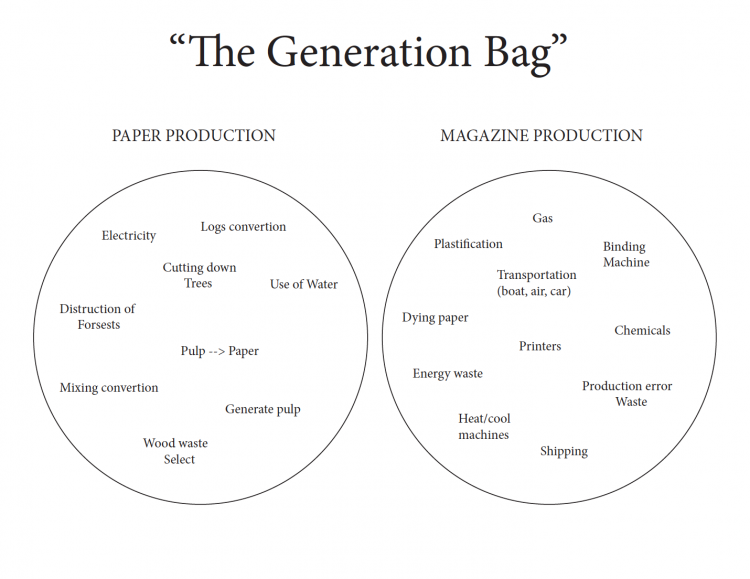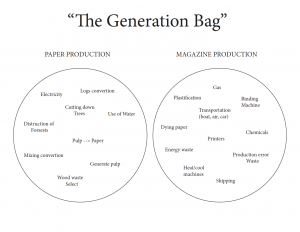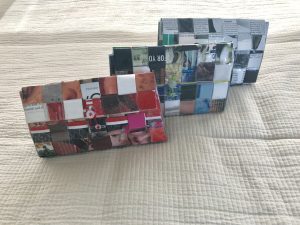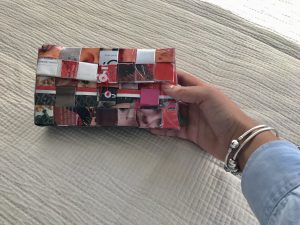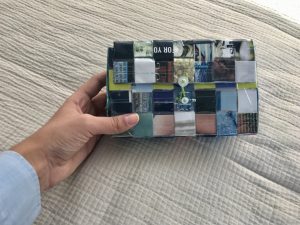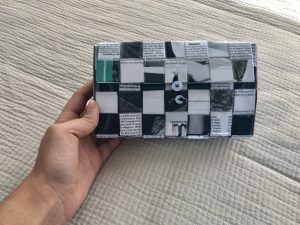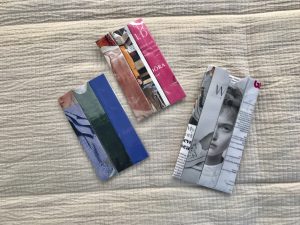- Design Brief
FINAL PROJECT
<<LONG LIFE DESIGN: DESIGNING BEYOND THE PRESENT>>
STUDENT NAME: Maria Agustina Sanchez
PROJECT NAME: “The Generation Bag”
Why did you make this project? What is its core function and concept?
For my project I decided to make a traveling clutch or a clutch to be used as a memory box. The reason why I made this project is so I could gift them to different generations: my grandmother, my mother and my little sister. The main idea is to connect 3 different generations through one object and see how each of them takes care of it differently.
What event(s) of environmental change will it help YOU adapt to or navigate?
I think that my project would help me navigate various environmental changes going on today like deforestation, paper waste, paper recycling and manufacturing. I think that showing a different way of recycling could be a new way for people to create and have something unique while giving new propose to something old. Since this would be a present, I went through a really careful way of selecting my materials and seeing how they are and work together.
In what ways will this object be useful and meaningful to YOU over 50 years? How does it offer aesthetics and function over time?
Since it would be a gift from me to another person that would add sentimental value to the piece, meaning that that person would take extra care of the object, making it last longer and hopefully it would last 50 years. Also since it would be used for a specific propose as to keep documents and for traveling only, it would not be a thing they would use every single day, meaning that helps it to last longer. To add on, since three different generations would be in charge of the clutch, it would be possible to see how different people with different mind sets take care of the same things.
What materials did you choose to use and why?
For my project I decided to focus on recycling and use the pages of old magazine paper. So I went around and asked my friends if they had any old magazines that they wanted to get rid of and if they were willing to give them to me for a project. I collected over 5 of them and went over them in order to carefully select the pages that follow a color scheme (black and white, green and lastly red). In order to make it waterproof and more resistance I taped the paper, plastering it and giving it a shiny final look. I do know that tape is a chemical composed material and is a non-recyclable product but without the use of this one then the bag would not be waterproof and that is a main characteristic. The reason why I choose these materials was to show a different material being used in something unexpected like a bag and showing how it can still be beautiful and unique.
- Resiliency and Repair Story: Written story or illustration that explains how your design addresses repair. How will your project be repaired and/or used in new ways over the next 50 years?
For my final project I am creating three different bags/clutches that would have the function to keep important documents or memories safe. To repair this design over 50 years, you would not need access to many materials and your skills don’t have to be of an advance bag maker. Since the bags are all laminated, this means that is waterproof as well as very resistible. If the object ever breaks or comes apart loose, it could easily be fixed by using tape in order to put the pieces together. Or if tape is not working and you want to try something new then you can stitch the parts together or more easily and convenient, just use a stapler.
- Systems Map: Graphic or 3D model/map that illustrates the systems that your design involves — how its materials have been sourced, transported, created and what systems they involve over 50 years. Which systems might be vulnerable due to climate change? (include at least 20 systems)
- Photo documentation
